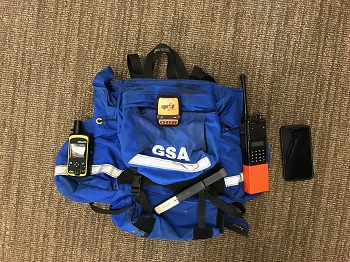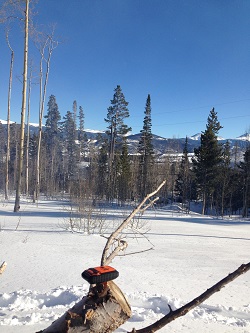The Satellite Messenger Evaluation project has been completed. The Executive Summary is provided below.
The full report is available here: Satellite Messenger Evaluation for Wildland Fire Management CoE-17-005.1
Click here to download a compressed (zip) file of the test report spatial data (kmz).
Note: The appendix of this report also discusses testing performed with TAK and goTenna and may be of interest.
Executive Summary
Wildland firefighters frequently operate in remote areas and are often a significant distance away from their supervisors or other nearby units. Additionally, wildland firefighters typically communicate with voice radios operating in analog mode, which does not facilitate location tracking or other digital situational awareness. One technology proposed to overcome these limitations and provide GPS location tracking and messaging for firefighters is satellite messengers. The Center of Excellence for Advanced Technology Aerial Firefighting (CoE) was requested to conduct a study of these devices to analyze their utility for firefighters. This study illustrated the technical specifications of two consumer-grade satellite messengers, the SPOT Gen3® and the Garmin inReach® (formerly known as the DeLorme inReach), and provided information on service options and costs. The study also assessed the capabilities of the SOS feature common to both devices and employed field trials to evaluate the performance of the devices in various types of vegetation and terrain.
 The CoE found that the SPOT device provides a one-way flow of information from the device user to others using predesignated email addresses, text messages, or website access. This device requires programming ahead of use to designate the time interval for location tracking, as well as the content of the three types of messages it can send. The inReach device provides a two-way flow of information, with others able to communicate with the device user via email, text message, or website.
The CoE found that the SPOT device provides a one-way flow of information from the device user to others using predesignated email addresses, text messages, or website access. This device requires programming ahead of use to designate the time interval for location tracking, as well as the content of the three types of messages it can send. The inReach device provides a two-way flow of information, with others able to communicate with the device user via email, text message, or website.
The SPOT device successfully transmitted a test SOS message from a meadow with a clear view of the sky, which then led to the Colorado Division of Fire Prevention and Control Duty Officer being notified of the SOS within 3 minutes. The SOS testing scenario was on a prescribed pile burn under the control of the area interagency fire management unit and the plan was for the Duty Officer to contact the interagency dispatch center regarding the SOS and have them establish radio contact with the unit in distress. Unfortunately, the phone system at the dispatch center was down during the test and no notification could be made. The CoE recommends that for mission-critical applications like wildland fire, the SOS feature be tied directly into relevant computer-aided dispatch systems—a complex requirement for interagency centers that frequently host firefighters from off-unit and from a variety of agencies.
Control Duty Officer being notified of the SOS within 3 minutes. The SOS testing scenario was on a prescribed pile burn under the control of the area interagency fire management unit and the plan was for the Duty Officer to contact the interagency dispatch center regarding the SOS and have them establish radio contact with the unit in distress. Unfortunately, the phone system at the dispatch center was down during the test and no notification could be made. The CoE recommends that for mission-critical applications like wildland fire, the SOS feature be tied directly into relevant computer-aided dispatch systems—a complex requirement for interagency centers that frequently host firefighters from off-unit and from a variety of agencies.
To determine the utility of the satellite messengers for personnel tracking, six field trials were conducted—two each in minimal, moderate, and heavy forest canopy. For each level of canopy, one test was conducted in rolling terrain and one in rugged terrain. These tests sought to establish the rate at which the location of a firefighter walking the perimeter of a simulated 100-acre fire with both devices set on a 5-minute tracking interval would be known to a supervisor watching in real-time via an Internet connection.
The CoE determined that both devices can transmit location information successfully with minimal delays when used under minimal and moderate forest canopies. However, under a heavy forest canopy the devices experienced difficulties. The SPOT device failed to transmit 20% of points and the inReach device took more than 5 minutes to transmit 50% of points (and during one test, failed to transmit 35% of points). The CoE recommends shortening the tracking interval when operating under heavy forest canopies to increase the odds of successful transmissions and cautions against relying solely on these devices to achieve situational awareness for firefighters operating under heavy forest canopies.
The full report is available here: Satellite Messenger Evaluation for Wildland Fire Management CoE-17-005.1
For more information on this project, contact Brad Schmidt at the CoE.

